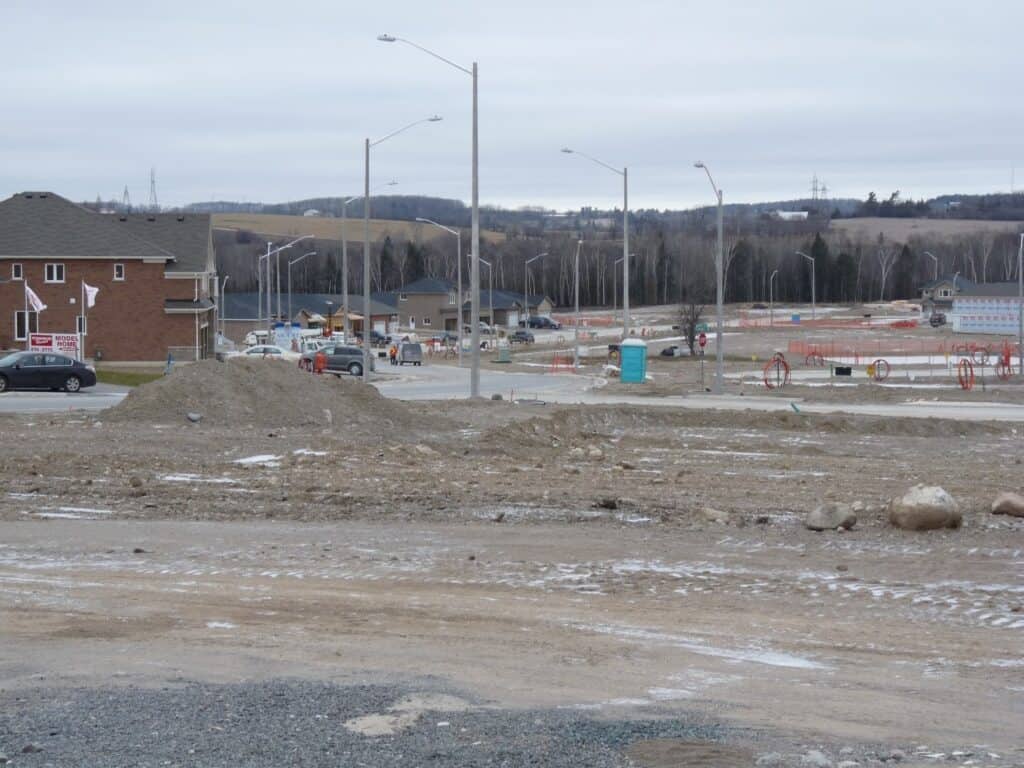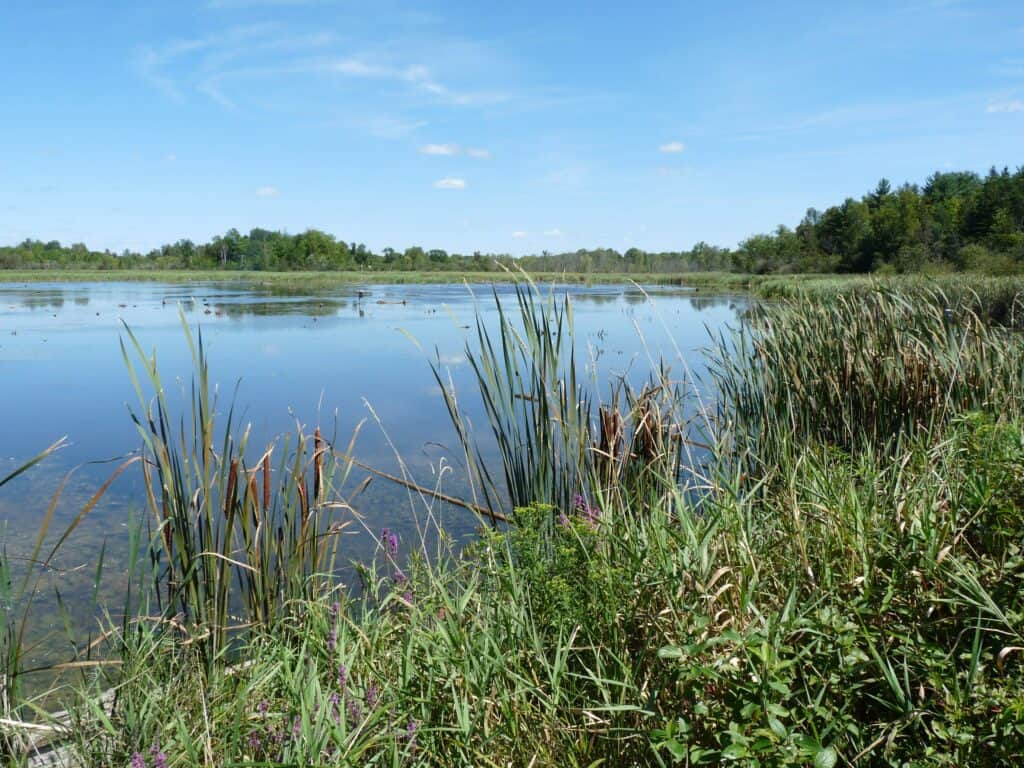Peterborough Examiner – November 25, 2022 – by Drew Monkman
This has been a particularly depressing fall for all of us who value nature and a healthy climate. As just two examples, the recent State of the Birds 2022 report has once again sounded the alarm about steep bird population losses in virtually all habitats. Adding to the despair, the final COP27 deal failed to set more ambitious national emission-reduction targets.
Against this dismal backdrop, the Government of Ontario has tabled Bill 23, the More Homes Built Faster Act, an omnibus bill proposing sweeping changes to the province’s natural heritage and land use planning legislation and policy. It spells disaster on both the climate and conservation fronts.
But Bill 23 is only partly about the housing crisis. As much as anything, it’s about the interests of developers, several of whom already own land on the Greenbelt in areas the Ford government wants to open up. The argument that there’s a shortage of land for housing is a myth. As Ontario’s Housing Affordability Task Force explained in its 2022 report “… a shortage of land isn’t the cause of the problem. Land is available, both inside the existing built-up areas and on undeveloped land outside greenbelts. … Most of the solution must come from densification. Greenbelts and other environmentally sensitive areas must be protected, and farms provide food and food security.”
Yes, the bill does contain some baby-step measures aimed at increasing urban and suburban density and housing mix. It will allow detached-home owners to build a laneway apartment on their property, and to turn their basement into a rental. However, as the Globe and Mail editorial of Nov. 21 said, “It doesn’t do the hard work of forcing greater densities on cities like Toronto in a meaningful way, by opening up areas zoned for detached homes to a wider variety of housing.”

Democracy undermined
Bill 23 would remove requirements for public meetings on certain planning matters and also take away people’s right to appeal planning decisions. Community members and groups would no longer be able to participate in or challenge development decisions affecting local areas. The Minister of Municipal Affairs and Housing would also be given the power to override municipal planning decisions (e.g., amend municipal Official Plans) and impose development.
Conservation authorities
The power of Conservation Authorities (CAs) would also be undermined by the bill. Watershed planning, the hallmark of Ontario’s CAs, would be severely diminished and replaced with piecemeal planning by over 400 individual municipalities.
The authority of CAs to regulate or prohibit development that negatively impacts wetlands, rivers, and streams would be reduced, as well. In fact, CAs would no longer be able to consider the conservation of lands when issuing or refusing to issue permits. By curbing the authority of CAs, Bill 23 may endanger people’s lives and property when their houses are built in areas exposed to risks from flooding.
For development projects approved under the Planning Act, CA permits would no longer be required at all. CAs would even be required to identify conservation authority owned or controlled lands that could support housing development.
Greenbelt under attack
Ontario’s Greenbelt was created in 2005 to protect the headwaters of the rivers that flow into Lake Ontario, to limit urban sprawl, to preserve valuable farmland, and to connect the forest and wetland ecosystems that run in an arc from Niagara Falls, north of the GTA, to the Oak Ridges Moraine south of Peterborough. This is one of the most biologically rich areas in all of Canada.
Bill 23 will open up the Greenbelt for development by removing 7,400 acres of precious farmland and natural areas from protection. This makes no sense when over 10 times as much land is ready for the development of mixed housing in communities where people already live. Although the Ford government would add new land to the Greenbelt to make up for the loss, the new land being proposed is far less environmentally valuable.
Allowing this development to happen would set a destructive precedent. It could mean that Greenbelt protected lands will be sacrificed when land speculators want to develop them to build expensive homes in sprawl development. The end result would be an ecologically damaged “Swiss cheese” Greenbelt. Accordingly, the Ontario Greenbelt Alliance is urging the Premier to follow the advice of the government’s own Ontario Affordable Housing Task Force and focus efforts on developing affordable housing on lands that have already been designated for development and have the necessary infrastructure in place.
Wetlands at risk
Among other damaging changes, Bill 23 would also overhaul the Ontario Wetland Evaluation System, making it more difficult to designate and protect wetlands as provincially significant. For example, it would no longer recognize species at risk in the evaluation process. Further, many if not most existing wetlands could lose their provincially significant designation and would no longer benefit from a high level of protection.
Wetlands provide myriad benefits that contribute to sustaining human and all other life, such as flood control, water purification and drought mitigation. Their carbon storage and sequestration values also position wetlands as exceptional nature-based climate solutions.
The government is proposing to introduce an offsetting policy to compensate for the loss of wetlands as a result of development. However, over 30 years of experience with wetland offsetting in the United States and Canada clearly demonstrates that offsetting is seldom successful in fully compensating for the loss of wetland area, functions and values.

Local wetland loss
Over 72 percent of historical wetland area has already been lost from southern Ontario, and wetland losses continue to occur across the province. Barry Snider, a Kawartha Lakes resident, has identified numerous wetlands in the Kawarthas that are being converted to farmland. It’s a level of destruction he hasn’t seen in decades.
To do his research, Snider used Google Earth and the time bar feature. He also spent many hours on rural roads searching for backhoes on farms. He confirmed the wetland status of the properties by checking “Make a Map: Natural Heritage Areas” which shows whether a location is an evaluated or mapped wetland. At present, in Eldon, Mariposa, Ops and Emily Townships surrounding Lindsay, he has found 93 areas totalling five square kilometres destroyed in the last 10 to 12 years. Almost all of it has been converted to farmland. These wetlands once drained and tilled are major greenhouse gas emission sites.
One particularly large wetland destruction totalling over 50 acres has happened at Linden Valley Rd. It is mapped as wetland by the MNRF and also as a wetland in Kawartha Conservation mapping. The province has also identified it as part of the provinces Natural Heritage System.
Bill 23 and the accompanying policy changes spell disaster for the farmland and natural areas that sustain us. As Ontario Nature said in its reaction to the legislation, “It is environmental deregulation writ large, premised on the faulty assumptions that there should be no limit to sprawl, that no place should be spared from the bulldozers, and that public input into planning decisions is nothing more than a useless annoyance.”
Clearly, Ontario’s lack of housing needs to be addressed, especially as Canada aims to welcome nearly half a million immigrants every year. However, allowing for more climate change-inducing sprawl does not need to be part of the response.
At the same time, local leaders everywhere, including right here in Peterborough, need to acknowledge that less sprawl means more infill. Planners need to plan for it, and citizens need to reject the NIMBYism – not in my backyard – that makes infilling difficult. All of us who value nature and a healthy climate must be champions of urban densification.
Take action
Tomorrow, November 26 from 10 am to noon, there will be a rally at the intersection of Lansdowne and Park Streets to educate the public about Bill 23 and to stand up against it. The participants will draw the attention of drivers and passers by using large signs and chants. People are also asked to wear green clothing, in representation of what we are speaking out for.